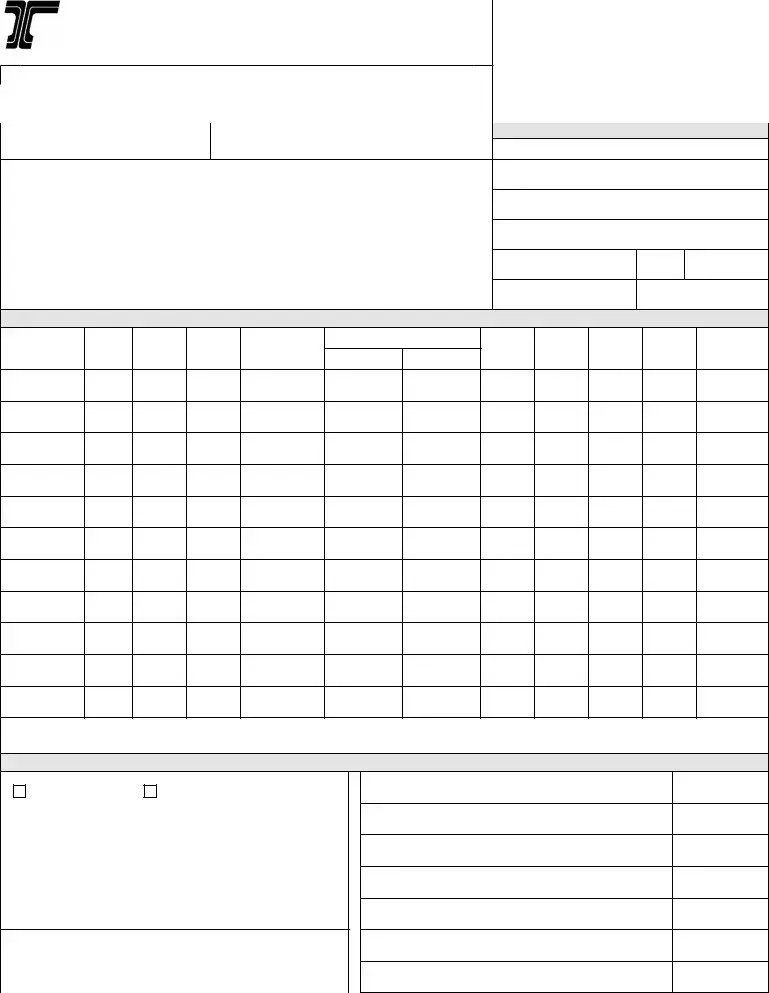Similar to the Oregon Monthly Mileage Tax form, the Federal Heavy Vehicle Use Tax (HVUT) Form 2290 is another tax document required for vehicles with a gross weight of 55,000 pounds or more operating on public highways. It focuses on reporting and paying the annual federal use tax. Both forms share a common purpose in taxing heavy vehicle operation, but while the Oregon form focuses on mileage within the state, Form 2290 is broader, covering federal tax obligations based on vehicle weight, regardless of the miles driven.
The International Fuel Tax Agreement (IFTA) Quarterly Fuel Use Tax Return bears resemblance to the Oregon Mileage Tax form as both require detailed travel and fuel usage records for heavy vehicles. Carriers file IFTA reports with their base jurisdiction, detailing fuel purchases and miles traveled in all participating jurisdictions. Like the Oregon form, the IFTA return is crucial for tax compliance in commercial transportation, streamlining fuel tax payments across states.
Similar in administrative function, the Quarterly Federal Excise Tax Return (Form 720) is used by businesses to report and pay excise taxes on specific goods, services, and activities, including fuel. While Form 720 covers a wide range of products and services subject to excise taxes, its goal of collecting taxes for federally regulated activities aligns with the Oregon Mileage Tax form's purpose of taxing road usage by heavy vehicles within Oregon.
The Unified Carrier Registration (UCR) Application and the Oregon Monthly Mileage Tax form share similarities in that both involve regulatory compliance for carriers operating commercial vehicles. The UCR program requires interstate carriers to register their businesses and pay an annual fee based on the size of their fleet, similar to how the Oregon form mandates monthly mileage reporting for tax calculation.
Another document resembling the Oregon Mileage Tax form is the Commercial Vehicle Registration Application used in various states. These applications often require information on vehicle weight and usage to calculate registration fees, quite like how the Oregon tax form requires detailed mileage and vehicle data for tax purposes. Both sets of documents play a role in ensuring commercial vehicles are legally registered and taxed according to their road use.
The State Sales and Use Tax Return shares a fundamental similarity with the Oregon Monthly Mileage Tax report in its role in tax collection. While sales and use tax applies to the sale, lease, or rental of goods and certain services, the Oregon form focuses on taxing vehicle miles. Both forms are critical for state revenue and require accurate business records to calculate the taxes owed.
Lastly, the Employer's Quarterly Federal Tax Return (Form 941) is analogous in its periodic reporting requirement, although it deals with payroll taxes. Like the Oregon Mileage Tax form, which mandates monthly reporting on vehicle operation to assess tax, Form 941 collects information on wages, tips, and other compensation to calculate Social Security, Medicare, and withheld income taxes. Both documents ensure compliance and proper funding of government programs through systematic reporting.

